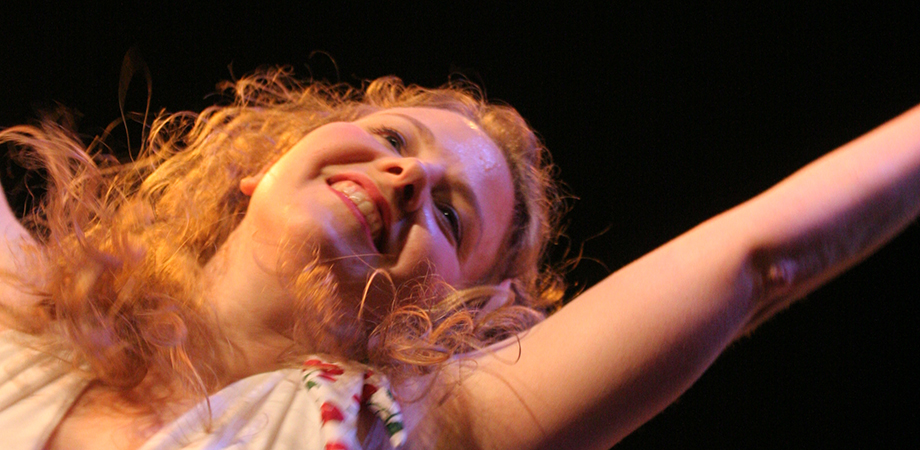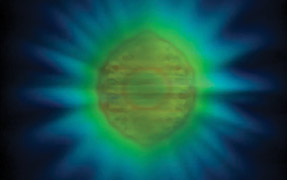#FacesofPhotonics: Senior Photonics Specialist Cheryl Asbury

When you think of ballet, photonics isn't usually the first word that comes to mind — unless you know Cheryl Asbury, Senior Photonics Specialist for Mission Assurance at JPL/Caltech, and an avid dancer since childhood. But pirouettes aren't Asbury's only passion: she'll be bringing more than 20 years of experience in laser development to SPIE Photonics West, teaching a course entitled "Improving Laser Reliability: An Introduction." That course, which she teaches alongside independent consultant Will Grossman, will cover a range of best practices, tips, and tricks that contribute to improved laser reliability.
"We use an interactive case study format that generates lively and informative discussions," says Asbury, who earned a BS in Applied and Engineering Physics from Cornell University and an MS in Applied Physics from the University of Michigan. "Laser designers, manufacturers, and end users have all found the course useful, as it addresses concerns throughout the entire laser product life cycle."
Read on to learn more about Asbury, her work with JPL/Caltech, a book that inspired her, and how she fell for dancing and photonics at the same time!
1. How did you become interested in the optics and photonics field? Was there a person who inspired you?
I have enjoyed dancing ever since I was very young, and was particularly interested in ballet for most of my pre-school and elementary years. When I was in third grade, my father took a one-year sabbatical and my family moved to Albany, California, from Mississippi, where I grew up. My parents packed as many activities as they could into that one year in California, including two pertinent activities: enrolling me in the San Francisco Ballet School, and taking my brother and me to the Lawrence Hall of Science in Berkeley, California.
One of the first things you saw when you entered the science museum was a large, vertical cylinder, with an ethereal hologram of a tutu’d ballerina inside! As you got closer to her, you soon found out that as you walked around her, she would do a pirouette! I was so fascinated by that ballerina hologram that my parents could barely drag me away to see the rest of the museum. After that, I was on a mission to find out how holograms were made, giving me an early start towards my photonics career.
2. Share the story of your favorite outreach or volunteer experience.
My favorite outreach experience is from graduate school, when I organized a team of other graduate students to create a curriculum to teach a week-long summer science camp for 8th grade girls. We had a great time studying wave interference with a ripple tank; measuring the speed of light across the atrium of the University of Michigan Electrical Engineering and Computer Science building; measuring the width of our hair with a laser; studying diffraction patterns of newsprint photos; making pinhole cameras; and taking electronic appliances apart to see what was inside.
Both the teachers and the students had a great time, and it was so exciting to see how engaged the girls were in all the activities! Whoever says girls aren’t interested in science, isn't paying attention.

PHO-NATIC: The ever-curious Cheryl Asbury
3. Explain your current research/what you do at your job. How does your work impact society?
My job is to make sure that the photonic parts selected for use in space will be reliable enough to complete the mission of the spacecraft or space-based science instrument. I am never bored, because unlike electronic parts, no military or industry standard exists that governs the reliability screening and qualification of photonic components. I must create test flows myself, in cooperation with other subject matter experts, that will ensure an adequate level of part reliability during launch, during operation in space, and sometimes, during operation on other planets and moons!
4. Can we expect to see more developments when it comes to industry standards for photonic parts in the future?
That is a big topic with many facets! There are some existing industry standards from Telcordia Technologies for qualification of photonic parts for highly reliable telecommunications applications, but not for space applications, and they do not include part screening. There are also a few types of photonic parts that are covered by military standard screening and qualification flows, but the majority are not covered.There have been several attempts to create standards for photonic parts, but the manufacturers are reluctant to sign up for them, and the users have trouble agreeing on the standards. Also, often, photonic parts are not produced in high enough volume to be able to develop reasonable process and manufacturing standards, and photonic parts encompass so many different and rapidly-changing technologies, that it is difficult to set “one-size-fits-all” standards. It's not that the issue has been overlooked, it’s just a very tough problem.
Maybe within the next decade at least some of the processes for manufacturing photonic components will be mature enough that the photonics community can settle on some suitable standards.

EYES ON THE PRIZE: Asbury prepares to view the Transit of Venus across the Sun in the summer of 2012
5. What book has impacted your professional life the most? Your personal life? Why?
I would say that the book that has most impacted my professional as well as my personal life is The Story of My Life by Helen Keller. I read it when I was in grade school, and was simply amazed at how she could persevere in the face of such seemingly insurmountable challenges.
Just knowing her story encourages me to keep fighting to find solutions to both personal and professional problems, no matter how significant they may be. If Helen Keller can learn to communicate, speak, and even thrive having lost both her sight and her hearing, then certainly I can overcome any obstacle I encounter.
6. What are you most excited to see in the future development of photonics?
I am most excited to see the development of photonic integrated circuits (PICs). The reduction in size and mass that is made possible by PICs would be a real advantage for space applications. Of course, we would need to make sure they are highly reliable. It doesn't look like I will run out of interesting photonic-part assurance work anytime soon!
| Enjoy this article? Get similar news in your inbox |
|



